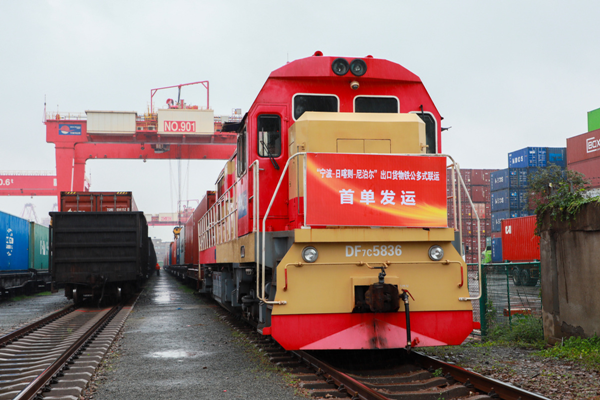Ningbo launches new multimodal export model

A container full of water sports equipment leaves Ningbo Zhoushan Port, bound for Shigatse in Xizang autonomous region by rail and then Nepal by truck, marking Zhejiang's first rail-road intermodal export. [Photo/Zhou Haohui]
A new multimodal transportation export model combining rail and road has officially been launched in Ningbo, Zhejiang province.
On Nov 14, Ningbo Customs at the Beilun Port Railway Station of Ningbo Zhoushan Port cleared a container which is scheduled to arrive at Shigatse West Railway Station in Xizang autonomous region in seven days, before being directly transported by cross-border trucks via the Gyirong port to Rasuwa in Nepal. This shipment represents the first use of the new multimodal transportation export model in Zhejiang, signaling a significant advancement in logistics efficiency.
Su Jingyi, general manager of Ningbo Fox International Freight Forwarding Co Ltd., said that the new model reduces transit time for enterprises by about 30 days.
According to Hu Feng, an official at Daxie Customs, compared to the traditional rail-road intermodal export model, the new one not only has simpler customs clearance procedures but also leverages the advantages of long-distance, high-capacity rail transport and the flexibility and door-to-door services of road transport, enabling rapid transfer and seamless connections of goods.
"The new model also eliminates the need for segmented customs transfer procedures. Enterprises only need to submit one multimodal transportation application form for the whole process, including place of origin, transfer points, and exit point," Hu added.
Under the new model, each container can save around 500 yuan ($69) in logistics and other export-related costs.
Officials from Ningbo Customs stated that the implementation of this new model will improve the matching and connection between different transportation models, reduce costs and increase efficiency in transportation and logistics, and enhance the stability of the transportation system.



 play
play